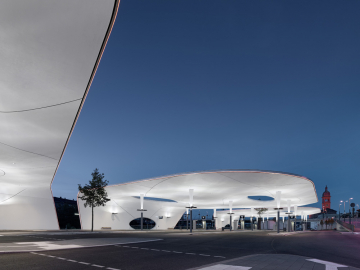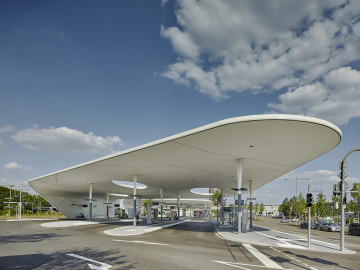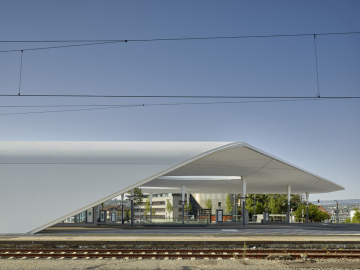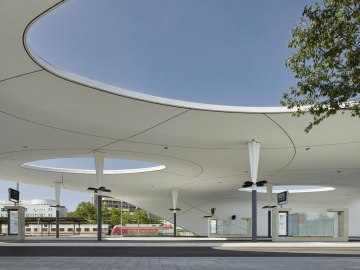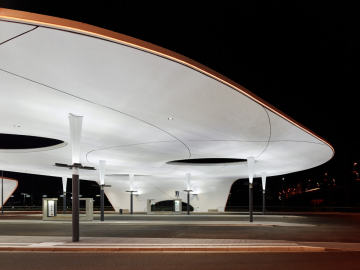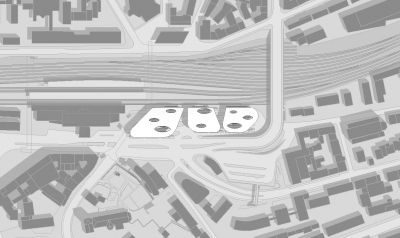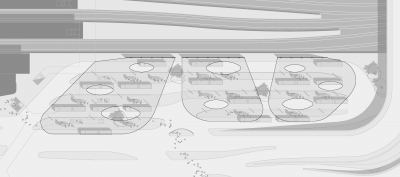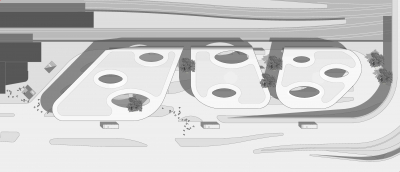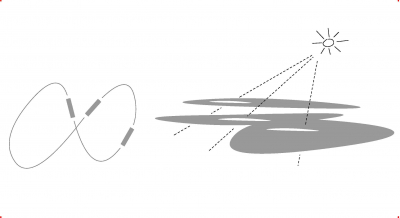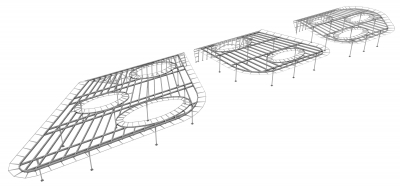ZOB Pforzheim (Central Bus Station of the City of Pforzheim)
The new construction of the Pforzheim Central Bus Station is part of a large-scale infrastructure development project, which, as well as improving traffic flows, will make a key contribution in urban development and architectural terms by upgrading the entire area.
The roofscape of the new bus station forms an unstructured area between the railway station and flyover and a new modern mobility hub within a high-grade urban space. Instead of a monotonous sequence of roofed platforms, what emerged is an urban space as an authentic "venue" boasting high recognition value. Situated just the right distance from the main station, the new bus station appears as an extension of the historical building - a to-the-point urban marker, which breathes new life into what was an inhospitable area to the east of the station building.
The bus station submits to the superordinate scale of the main station by subdividing the roof area into three sections, benefiting from the head-turning visuals and significance of the latter within the urban fabric and provides thrilling views and insights into the districts north of the railway line.
The language of forms employed in the original historical station building from the 50s has been upgraded with an element of contemporary design: The curved edges of the roof sections are derived from the typical radii and loops of vehicles in motion - the bus station features prominently as a dynamic local transport center. Openings over the lanes allow light and sunshine to flow into the bus platforms as well as structuring the view from below and enlivening the spatial experience with a varied interplay of shadow.
Linear arrayed elements encompass a compact summary of the required bus-station functions, small and easily accessible ‘functional islands’ as “venues” are favored instead of scattered individual elements.
Accordingly, the roof spaces, columns, floorings, furnishings and lighting scheme all come together to form a single architectural whole.
The supporting structure consist mainly of the columns and girder grids. The girder grids slowly fold downward, merging into the railway track area. The positioning of the columns reflects traffic planning and the use of areas under the roofing.
The columns and girders consist of rolled steel pipe profiles and beams. The base points are loose-jointed in both directions.
Rising upward, the columns expand in a cruciform coumnhead. From there, they are connected rigidly via welded brackets to the interfaces of the supporting clusters made of standard roller profiles on the girder grid of the roof; this sees the girders and columns form multiple field frames in both directions.
The frame is used to reinforce the support structure. Fluctuations in temperature can be absorbed thanks to the flexibility of the “super-flex“ columns and via torsion at the base point.
The internal space-defining paneling of the supporting structure is formed using movable suspended cement-bound plaster supporting plates. The “graphical“ aspect of the required expansion joints underlines the dynamically elegant nature of the roof shell and gives a hint to the concept of the form.

